project overview
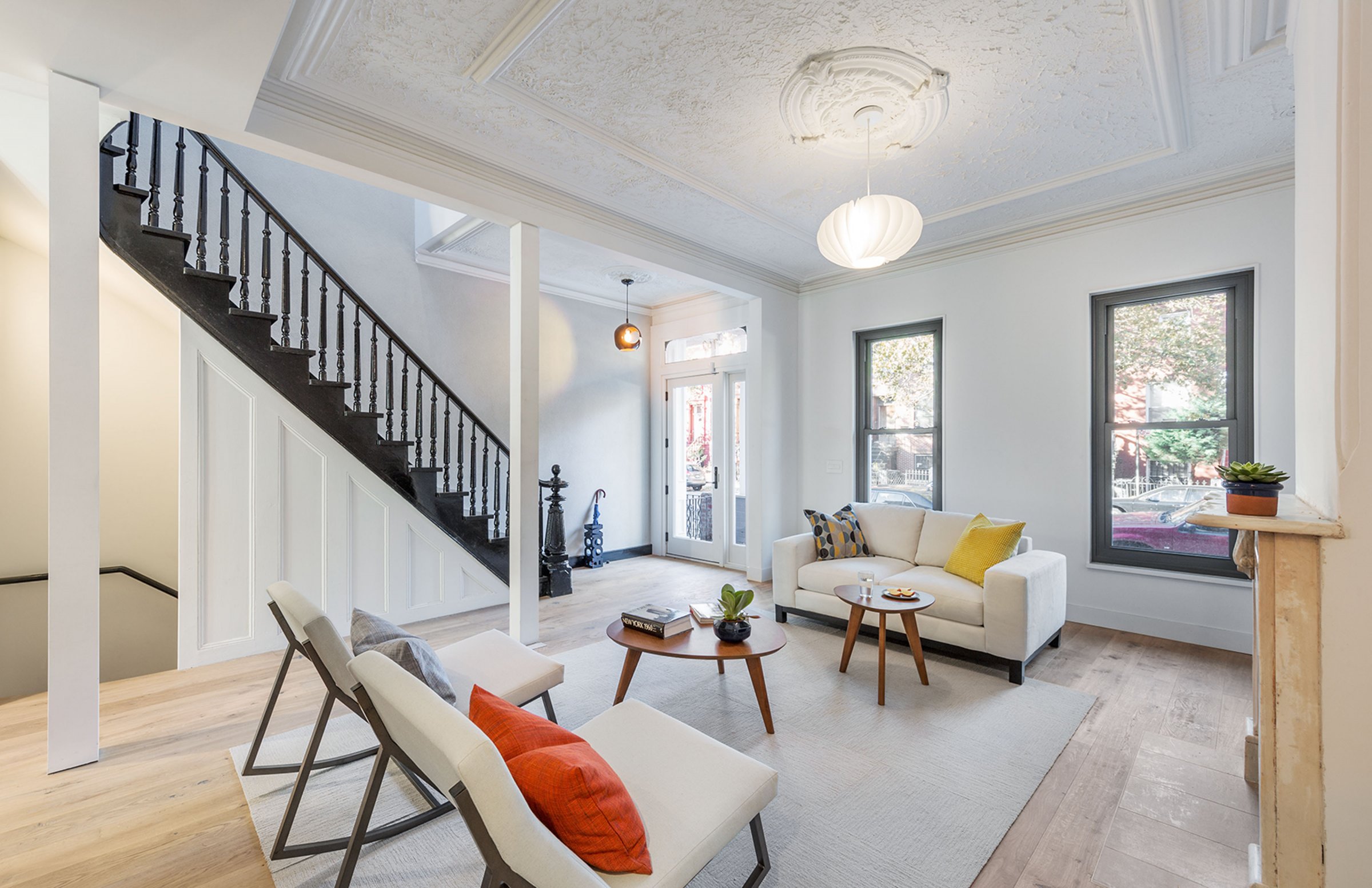
Although legally a one‑family house, the structure had been used as a two‑family dwelling. Master‑planning studies showed that creating a legal two‑family residence would sacrifice historic character, so the design shifted toward addressing modern ways of living and accommodating different household types.
'Flex Space' By centrally locating a full bath and half‑kitchen on the first floor, the front living room can become a home office or caregiver suite. The cellar was excavated and finished for additional living space, and the un‑programmed interior porch provides daylight and views to the backyard.
Livability A third bedroom was added upstairs to accommodate various household configurations—from a young family to millennial roommates.
.jpg)
The character of the original house was animated through two moves: (1) restating the existing top‑of‑the‑stair curved winder as an oculus and (2) inventing a double‑height modern interior porch to complement the ornamental front porch.



Beneath the 1879 addition sits the dining area with a modern wood stove. The succoed hearth brings the language of the rear façade indoors, a play of exterior surfaces reimagined within.

A compact grey volume anchors the parlor floor, enclosing a closet, full bath, shower and butler's kitchen. Already divided from the rear living area by a sliding door, the space could be fully transformated by infilling the front column wall, becoming an office or a private suite for guests or caregivers.

Deployed as a notation, color traces the house: red links front to back through window and door shifts, Prussian blue distinguishes the 1879 addition, lemon yellow animates the children's bath.

Overlooking the interior porsch, the office is enclosed by a red sliding door and illuminated by a skylight. The blue paneling is Artisan* by James Hardie fiber cement siding, selected for its ability to be mitered cleanly at corners.
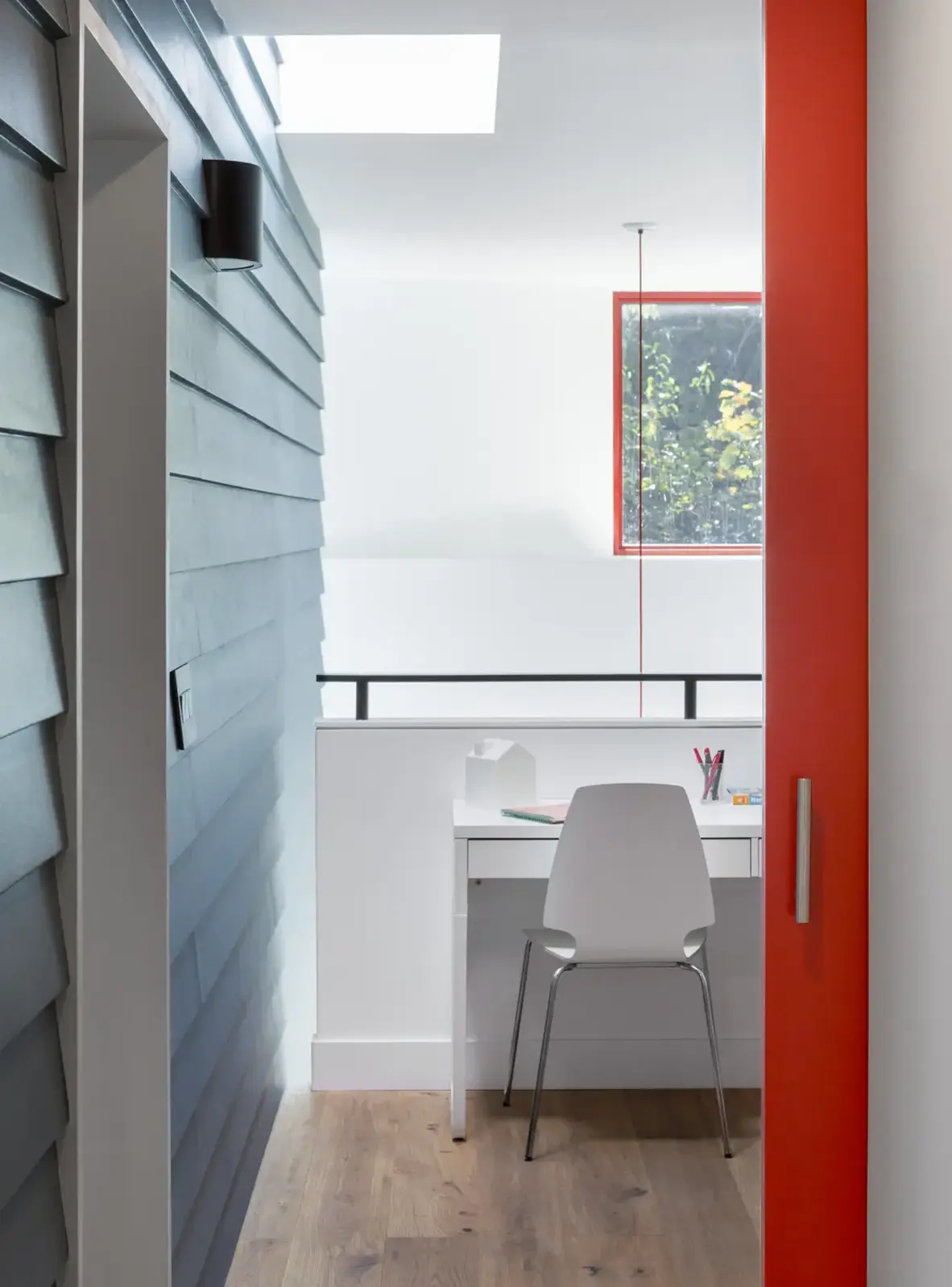

On the back facade, the red-framed window repeats a move from the historic front, where one window was relocated and highlighted in red to mark the change. To the right, the "back stop" defines the end of the lot, providing seating while concealing garden tools and equipment.
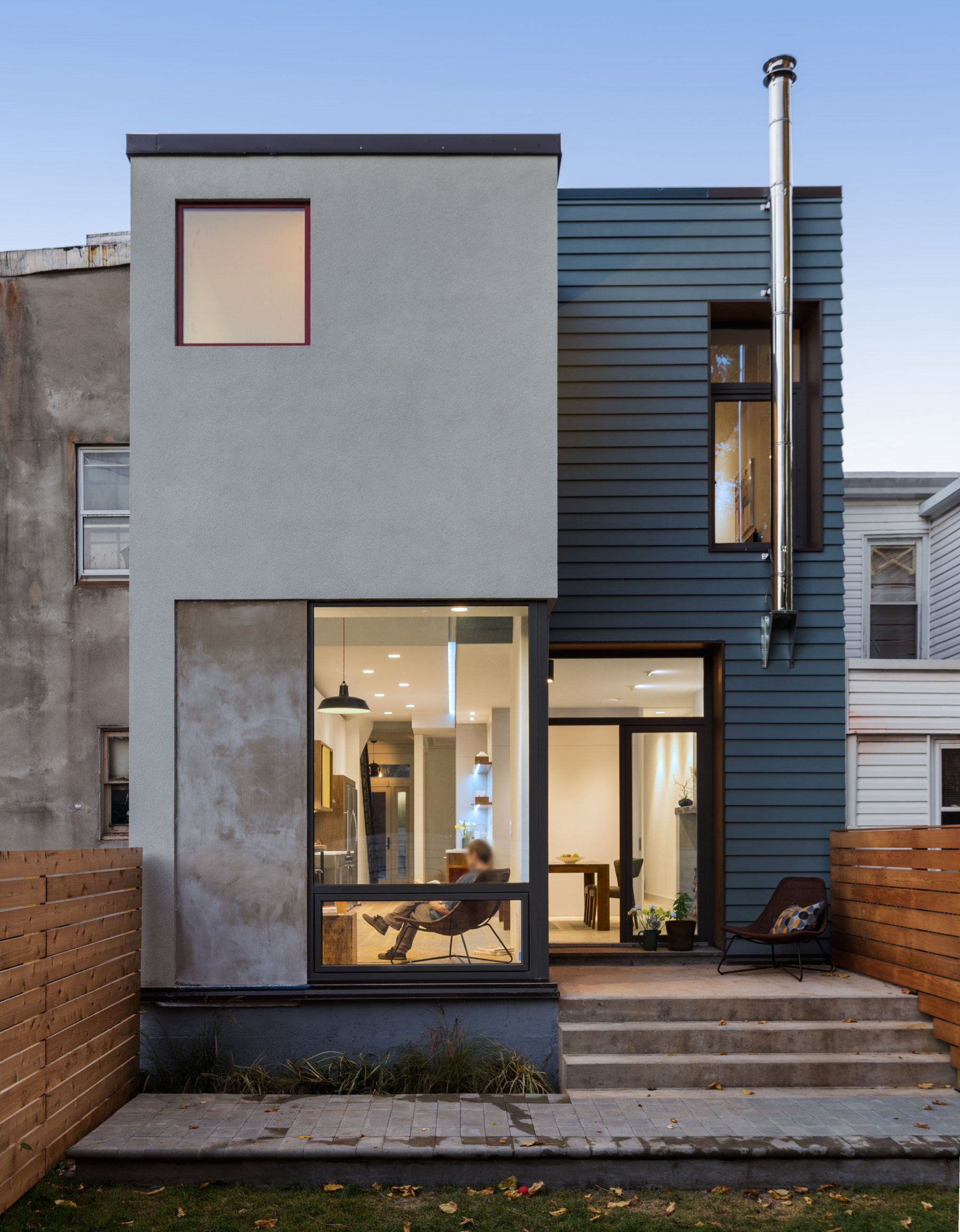
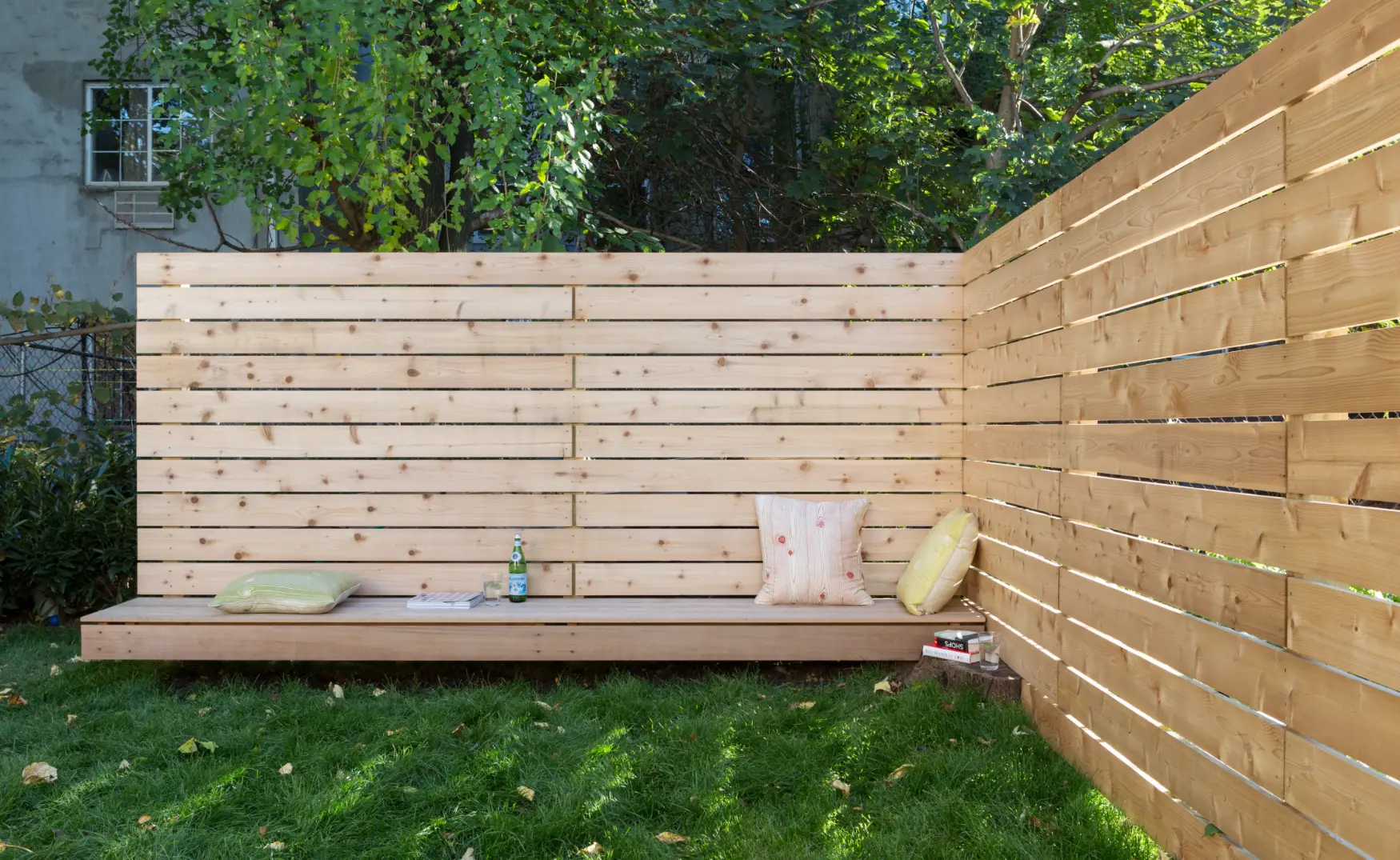
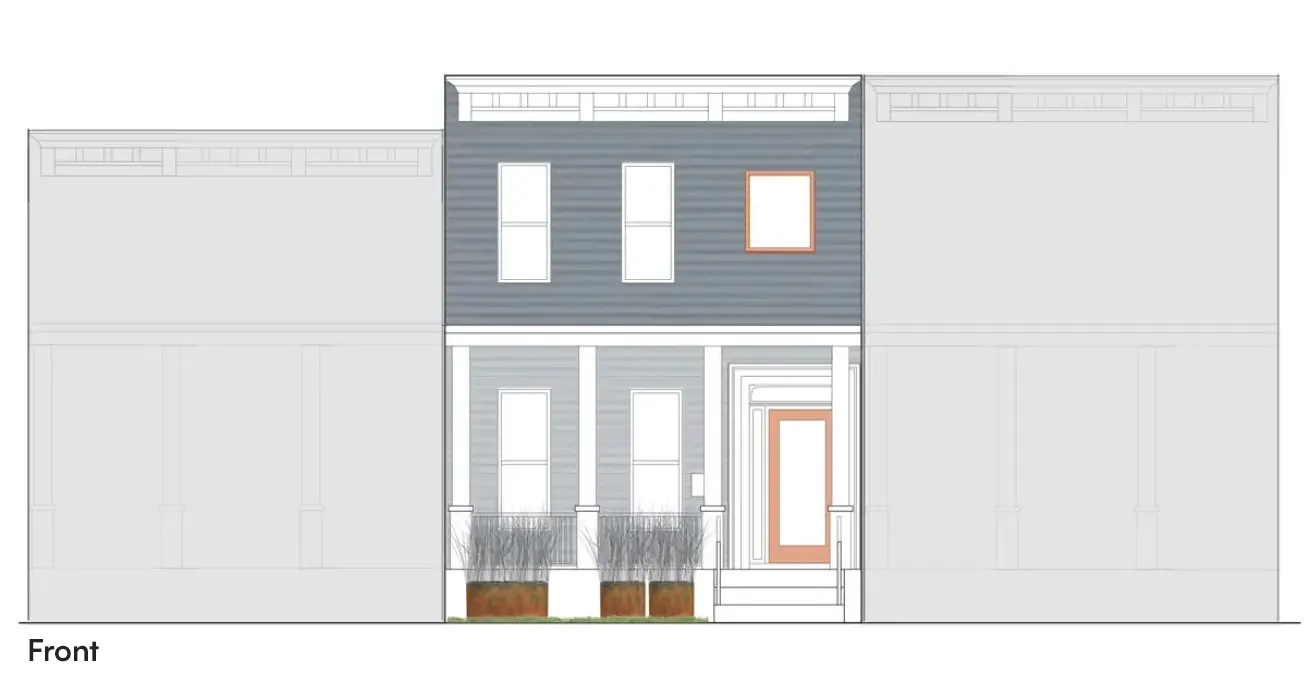
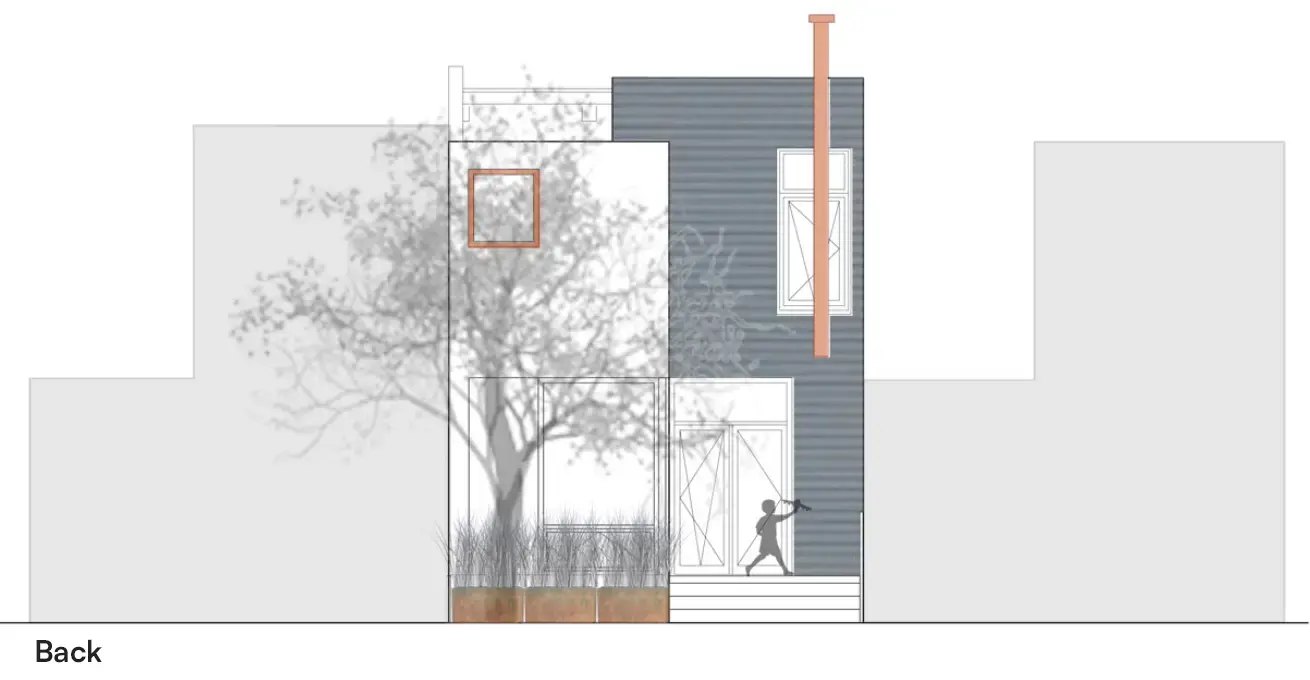
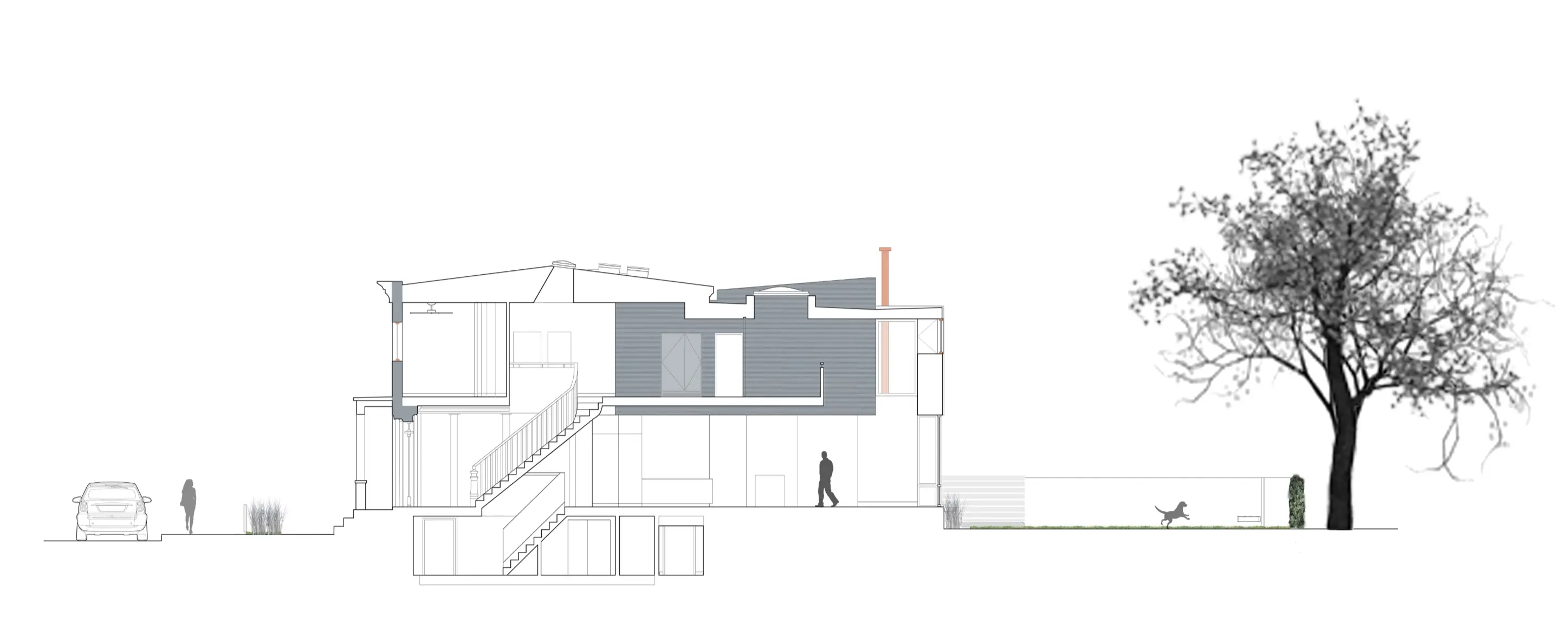
— Rochlin, The Front Porch in Home, Sweet Home.
BoroXDesign, Queens Historical Society, Invited Exhibit 2019
Brooklyn Chamber of Commerce, Building Brooklyn Awards, Winner Residential – 1 to 5 Dwellings category, 2018
Brooklyn Queens AIA Design Awards, Renovation Award of Excellence, PorcHouse, 2016
"Architects Radically Rethink Bed Stuy Wood Frame House, Add Two-Story Extension" — Brownstoner, The Insider, Cara Greenberg (Interiors & Renovation) 2016